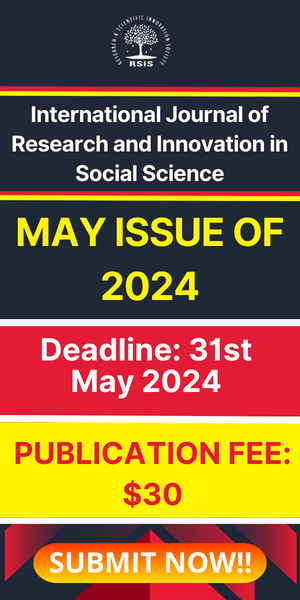Sub-Acute Toxicity Study of Ethanol Leaf Extract of Ocimum Canum on Liver of Wister Rats
- June 13, 2019
- Posted by: RSIS
- Category: Pharmacology
International Journal of Research and Scientific Innovation (IJRSI) | Volume VI, Issue V, May 2019 | ISSN 2321–2705
Sub-Acute Toxicity Study of Ethanol Leaf Extract of Ocimum Canum on Liver of Wister Rats
Joseph O.S.1*, Builders M.2, Joseph O, T.3, Zubairu S. A.4, Musa T.5, Oyepata P. J6
1,2Department of Pharmacology, Faculty of Pharmacy, Bingham University, Nasarawa, Nigeria.
3,6 Department of Pharmacology, Faculty of Basic Medical Sciences, University of Port Harcort, Rivers State, Nigeria.
4,5Department of Pharmacognosy, Faculty of Pharmacy, Gombe State University, Gombe State, Nigeria.
*Corresponding Author: Joseph O. S
Abstract
Background/Aim: The liver plays an extremely important role in the body. It ensures the removal of toxins and has numerous other functions, including: Fat metabolism, carbohydrate metabolism and protein metabolism. The function and integrity of this organ is regularly challenged by endogenous and environmental substances. Ocimum canum is a plant regularly consumed in many part of Sub-Sahara Africa in management of various conditions such as infection, pain and diarrhea. The aim of this study is to determine the sub – acute effect of Ocimum canum on the liver of Wister rats.
Method: Animals of either sex were selected. Group 1 received distilled water (10 ml/kg), while group 2, 3 and 4 received Ocimum canum 100, 200 and 400 mg/kg respectively. Animals were kept in standard cages and given access to the extract, water and food orally for 28 days, after which they were weighed and sacrificed. Blood was collected by cardiac puncture and taken immediately for hematological and chemo pathological analysis. The histological hepatotoxic potential of the plant was studied using haematotoxylin and eosin (H&E) staining technique.
Result: There was significant (P<0.05) decrease in RBC, HGB, MCV, while there was no change in the level of neutrophiles, basophiles, eosinophiles and platelets. The extract did not produce any significant change (P<0.05) in the level of ALB, AST and ALT when compared to the control. At 100 mg/kg dose level, Ocimum canum produced a decrease in BILD concentration in the treated rats while at 200 mg/kg dose level it caused slight increase in the levels of ALP, BILD AND BILT concentration. Histopathological observation also agrees with other parameters.
Conclusion: the result of the study suggests that the plant may be safe for consumption as it is been used by the locals to achieve it intended purpose.


